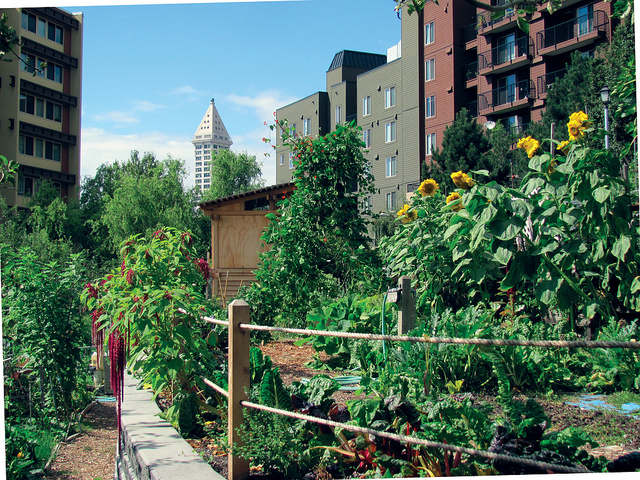6 Easy Facts About City Blooming Described
6 Easy Facts About City Blooming Described
Blog Article
The Only Guide for City Blooming
Table of ContentsSome Known Questions About City Blooming.The City Blooming IdeasRumored Buzz on City BloomingThe 8-Second Trick For City BloomingWhat Does City Blooming Mean?
Interested in growing food available for sale in the City of Chicago? Considering beginning a community yard? Modifications to the Chicago Zoning Ordinance enable agricultural usages like area gardens and city farms in lots of parts of the city. Below is a listing of frequently asked inquiries pertaining to the rules and policies that growers ought to take into consideration when preparing a metropolitan farming task.
The zoning amendment does not customize any type of various other codes dealing with composting, building authorizations, buying or leasing City possessed building, organization licenses or ecological contamination. There are existing codes that control these concerns and they continue to be in full effect and might apply to your job. Community gardens are usually had or taken care of by public entities, civic organizations or community-based organizations and preserved by volunteers.
Urban farms grow food that is meant to be offered, either on a nonprofit or for-profit basis. Due to their commercial function, city farms need a service certificate. Yes. A neighborhood garden is permitted to market surplus produce that was expanded on site if the sales are accessory or subservient to the yard's key objective described above.
The Best Strategy To Use For City Blooming
Composting is allowed but just for plant material that is produced and utilized on site. The quantity of garden compost product can not surpass 25 cubic lawns at any kind of offered time according to the standards in 7-28-715 of the City's Municipal Code. Yes. Because the dirt at a lot of new yard websites requires changing, garden compost, dirt, wood chips, or various other products can be obtained to create or enhance the growing room - container and raised bed gardening etc..

If a building authorization is required then the hoophouse will certainly be thought about an accessory structure. You can learn even more concerning the building permit demands by getting in touch with the Department of Structures. The 25,000-square-foot dimension restriction is planned to avoid a solitary area garden from dominating a given block or taking away from the block's existing domestic or business character.
The limitation does not put on gardens found in Public Open Area (POS) areas. Can there be even more than one community garden that is 25,000 square feet on a single block? Yes. The dimension limit puts on specific yards, not to individual blocks. No. Secure fencing is not needed, however, gardens that have big parking lot might be called for to mount secure fencing or other landscaping features.
The Ultimate Guide To City Blooming
B1 & B2 districts require that all industrial usage activities be carried out indoors. Is secure fencing needed for urban farms? Fences may be required, along with landscape design and screening, for certain parking locations and outdoor job or storage areas depending on area and the particular activity taking location.
Yes. Urban farms need building permits and zoning approvals prior to building. Other kinds of city review may be required relying on details structures, tasks, size, landscape design, licensing, public health and stormwater management issues. A lot of these demands are determined in the project layout or allowing process, however, the applicant may be accountable to independently recognize specific licenses or allows that may be required.
Yes. The kind of permit is determined by what is happening at the site. The Department of Business Affairs and Consumer Security can assist identify the particular type of service certificate that's required. Yes. Off road vehicle parking is needed for the majority of business projects in Chicago. The needed number of car parking areas is based on the variety of workers working with website and not the square video footage of the growing space.
City Blooming Fundamentals Explained

A city farm can offer compost product produced on website, however, the procedure should conform with the regulations in 7-28-715 of the Chicago Municipal Code. Aquaponic systems are allowed indoors on urban ranches in several zoning areas.
As much as 5 hives or colonies of honey may be maintained as an accessory usage. Beekeepers should register with the Illinois Department of Agriculture. For more info concerning the suggested zoning change you might call the Department of Housing and Economic Advancement, Bureau of Planning and Zoning at 312.744.8563.
, which takes place in rural areas at the side of suburbs.
Everything about City Blooming
It can involve a movement of organic cultivators, "foodies" and "locavores", that seek to develop social media networks check over here founded on a common values of nature and area holism. These networks can create using official institutional support, ending up being incorporated right into neighborhood town planning as a "change town" movement for sustainable urban growth.
The extra direct accessibility to fresh vegetable, fruit, and meat items that might be understood with city farming can boost food protection and food security while reducing food miles, causing lower greenhouse gas discharges, thus contributing to climate change mitigation. Some of the first proof of urban agriculture comes from Mesopotamia.
Report this page